Sproutingfam.com is supported by its readers. If you purchase through a link on my site, I may earn a commission. Learn more
How To Make Organic Liquid Fertilizer (Plus 1 KNF OHN Recipe)
When you learn how to make organic liquid fertilizer, you discover a goldmine for your garden.
One of the best ways to continuously feed nutrients to your plants is to use an organic compost. But compost takes some time to make, and sometimes you can’t or don’t want to make it or buy it.
So if you’re in this circumstance, the next best thing to organic compost that can sometimes almost complete replace it is organic liquid fertilizer.
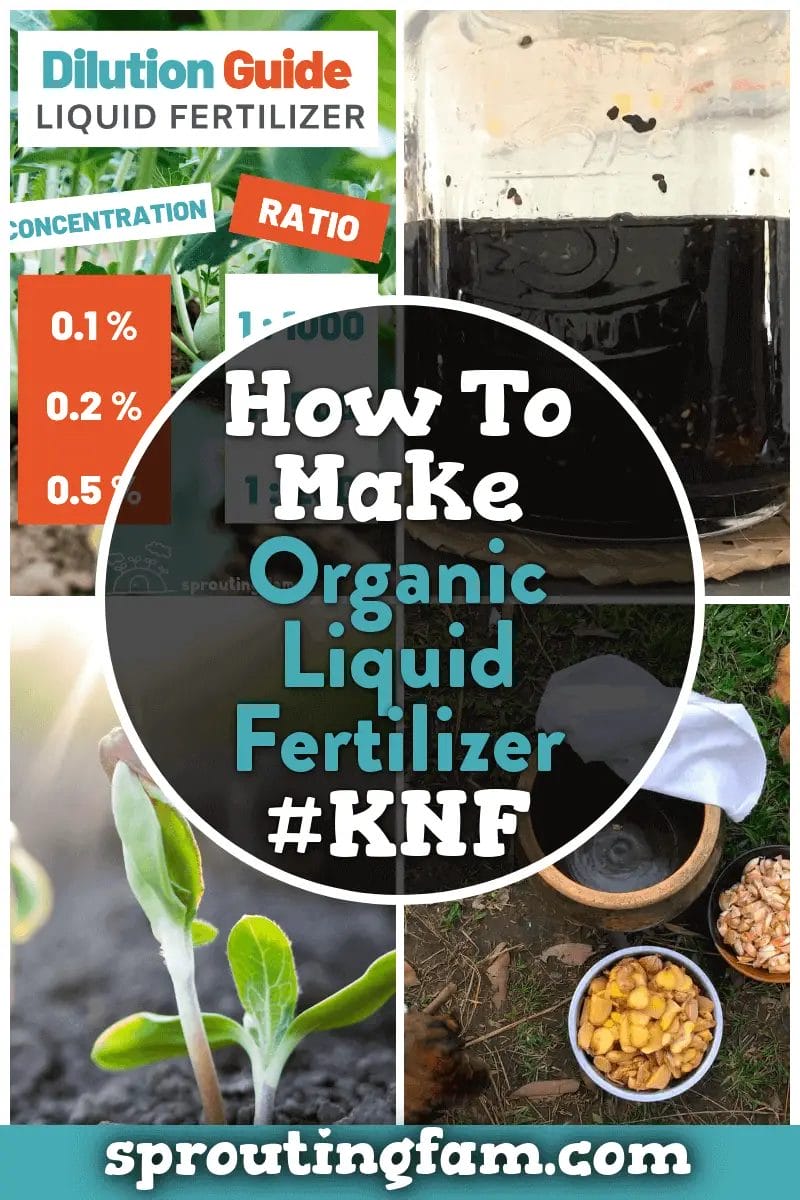
How To Make Organic Liquid Fertilizer
The overall process of making all fermented bio liquids is this:
- Take plants, herbs, fruits, manures, etc
- Put them in a big jar or dig a hole and line it (manures)
- Add water and sugar
- Cover with a cloth
- Let it ferment
Each will have its own spin on these steps, but this is the general idea for these biofertilizer liquids.
Organic liquid fertilizer is also referred to as “fermented bio liquid.”
Making organic liquid fertilizers is not hard. And if you’ve ever brewed your own beer, then you’re already an expert.
Our Fermented Plant Juice Recipe shares How To make One step-by-step In Detail.
It takes some fine tuning, like finding the proper waiting area, storage container and ingredient/water amounts, but that’s as hard as it gets.
The hardest part is finding where to put the container. I like to use garlic for my herb hormones. Its powerful smell lingers wherever you have it, so I leave it far from the house in a shaded area.
Make sure any organic liquid fertilizer you make gets ZERO direct sunshine. Indirect sunshine is also best avoided.
Mold will grow on the top.
If it’s black mold, you must throw out your batch.
My mother in law saves the white mold that grows and says it’s not mold. If that’s the case then it must work as some type of scoby or something, but I am not sure about this. I don’t save that white part. If you see white mold growing, this is a good sign and no need to do anything. This happens whether you leave your knf concoction in the house or garage to ferment.
Applying Organic Liquid Fertilizer Combinations
Combinations are KEY to using these KNF liquid fertilizers for natural farming.
After placing seeds in the dirt where I’m growing red leaf lettuce, for example, I am using a 1:1 part fermented brown rice water and liquid herb hormone. This is then diluted with water.
Ideally, FPJ would also be in this combo.
The way I learned this is to combine all 3, the brown rice water, the LHH, and the FPJ. You combine all these evenly and then dilute them according to the application.
So it would be 1:1:1 part fermented brown rice water, liquid herb hormone, and fermented plant juice.
For seedlings, dilute with a lot of water, such as 1:500. Once the plant is fully grown and producing you can make it stronger, i.e. 1:100 or 1:50 (3-part ferment combo + water).
For soaking seeds, dilute the most heavily, so the mixture is less concentrated.
In order to get maximum effectiveness from your liquid fermented fertilizer, it’s recommended to make several types of liquid fertilisers and then evenly mix/dilute them for use on your natural farm.
Diluting Liquid Fertilizer
Using wrong concentrations is the biggest mistake that can be made when natural farming with fermented bio liquids
Undiluted, any organic liquid fertiliser is too strong for direct application on the plants or when nourish your gardening soil. Even for soil it should be diluted.
Diluting extends the usage of your batch and helps you see all you need to nourish your gardening soil.
The main one we’ve been using is a mixture of brown rice water and liquid herb hormone. The two alone have worked well, but adding FPJ is best, at 1:1:1.
Storage And Fermenting Containers
We use a clay pot most the time, but the glass pots I’ve made them with were always successful as well. Clay pot with a cloth on top tied off is the best way. This means there is some oxygen inside, but we try to get most of it out before capping it off.
Suggested pH Levels
The pH level of most fermented bio liquids is acidic. It’s usually around 4. The acid comes from the fermentation, as microorganisms produce lactic acid among other end products.
A pH level of 3.0 to 4.0 signals that your fermented bio liquid is ready.
*FYI: Fermented bio liquid from snail shells won’t be acidic because calcium from shells make it alkaline.
Benefits Of Using KNF Liquid Fertilizers
What the fermentation does is it extracts the liquid from plants or animal cells (or whatever organic matter you’re using), and helps break down the material and eventually creates wonderful plant food nutrients like amino acids or humid acid for example.
- Prevents crop diseases
- Prevents bacterial attacks
- Prevents insect invaders
- Helps your plants produce more
- Helps make your plants stronger (stems, leaves, roots)
Are there downsides of using these KNF organic liquid fertilizers?
No.
Natural Farming Liquid Fertilizers Simply Work
Fermented liquid fertilizers (like FPJ) work because of the process of organic materials breaking down into various nutrients.
Brown sugar is the key ingredient that makes this happen.
In nature, a type of fructose is released from the roots of plants. This is nature’s way of providing microorganism’s food.
This is why sugar is necessary. It causes the fermenting liquid’s osmotic pressure. This extracts the liquid from your ingredients.
Is Brown Sugar Mandatory For Making Liquid Fertilizers?
Brown sugar is not mandatory. There are better options. Raw sugar is what you want and what these forms of permaculture truly ask for.
“Brown” sugar in Natural Farming literature has been mistranslated.
“Raw” sugar is what we should be using.
True raw sugars like turbinado, demerara, muscovado, or jaggery sugar.
These also come from sugar cane, but are unrefined unlike white and brown sugar. These raw sugars don’t go through the centrifuge process that separates out the molasses.
These are what KNF and natural farming ask for.. not brown sugar.
However, brown sugar works because that molasses is added back in.
White refined sugar will work too, but it is the worst choice.
White sugar won’t give your ferment’s microorganisms enough to feed on.
Another issue is osmotic pressure, which it may not have enough of for proper nutrient extraction. You’d get materials to ferment, but your fertilizers would be weaker than they should be.
Large natural farms use molasses because it’s more economical than brown sugar.
Molasses is just as effective as brown sugar because it provides all the essential nutrients that the microorganisms need to go to work in breaking down the organic matters chosen to ferment.
Various Types You Can Make At Home
You can make many different types of organic liquid fertilizers.
Each will vary in quality and effectiveness depending on what you use to make them.
The following ingredients make up most forms of fermented liquid fertilizers:
- green leafy plants
- aquatic plants (seaweed)
- food scraps (organic)
- fruits
- medicinal herbs
- animals (fish, meat scraps, etc.)
- human waste
And of the main categories of fertilizer ingredients above and their endless types, each will create a different result.
I could use any number of medicinal herbs on a liquid herb hormone batch, for example. But there are also recommended combinations, like garlic and ginger.
I learned this homemade liquid fertilizer bio liquid combination from my mother-in-law who’s been using these KNF principles alongside her Thai farming wisdom.
Can Liquid Fertilizers Replace Composting?
If you can’t get enough organic compost for your garden, a fermented bio liquid is part of the answer.
Organic liquid fertilizers offer an effective way to successfully grow a no till or no dig organic garden without regular use of quality compost.
They’re not a complete replacement, but there are ways to using other plants which are chopped down to feed the soil, or rice bran, plus several of these organic liquid fertilizers to nourish and feed the soil below without having to use a truckload of compost that took 8 months to make.
The downside to not making your own organic liquid fertilizer:
- The price
- The fact that you wouldn’t be using local microorganisms
Fermented bio liquid fertilizers are full of natural microorganisms that help nourish your plants.
They’re most effective when made with local plants from your area.
Mulching with grass or other plants plus one or two of these free fertilizers should definitely be able to replace compost when all combined. Fertilizers can even be made from weeds growing between driveway cracks!
We have a post here on the blog that shows how to start your own compost pile.
A Fermented Bio Liquid Recipe: Liquid Herb Hormone (OHN)
Below is the liquid herb hormone recipe for Orient Herbal Nutrient (OHN).
How To Make Liquid Herb Hormone
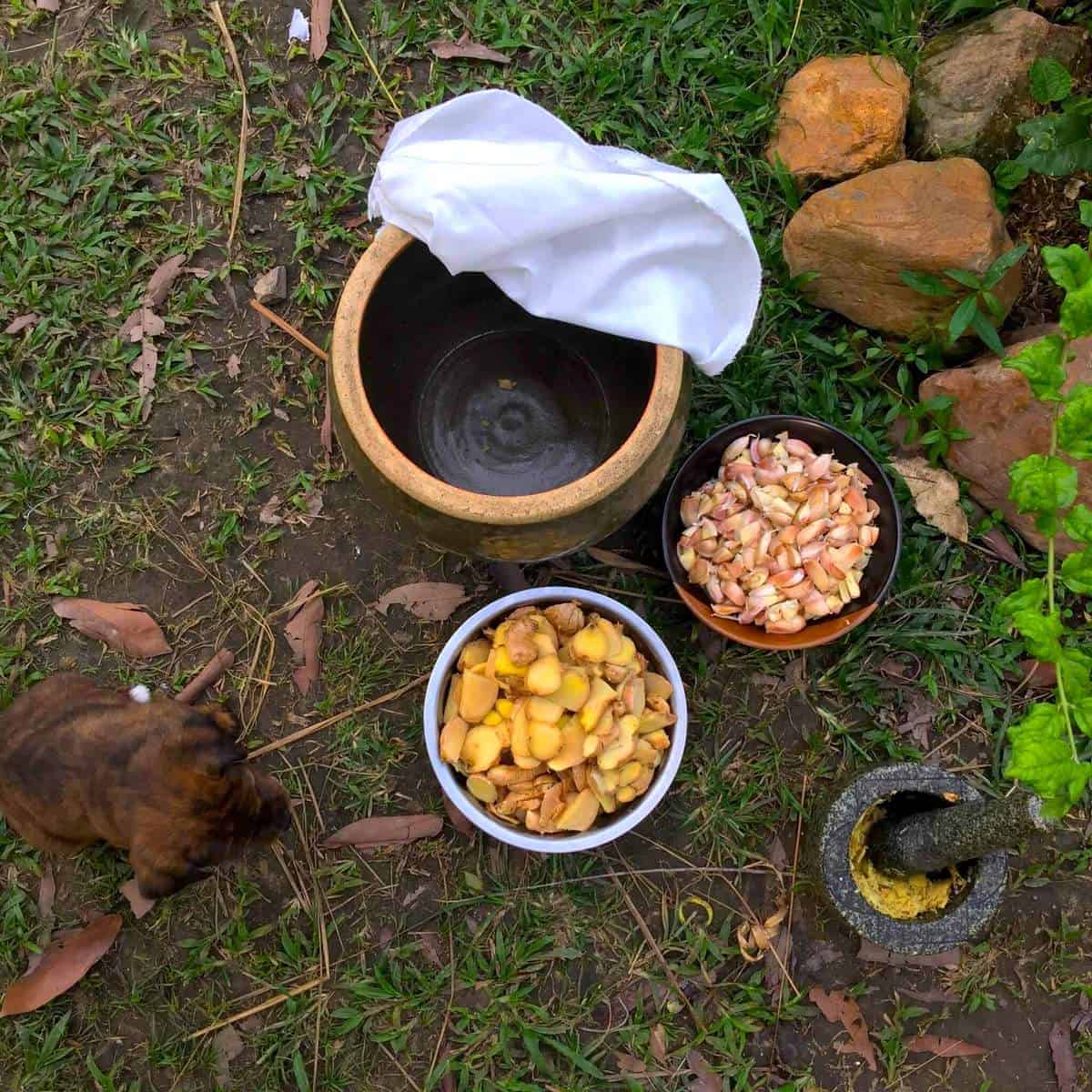
For this OHN recipe I used garlic and ginger.
You can use any combination of medicinal herbs.
Ingredients Needed:
- Garlic
- Ginger
- Alcohol: the extractor does not need to be alcohol. You can use straight water (takes much longer) or wood vinegar
- Sugar
- Water
How To Make It:
Step 1. Prepare Medicinal Herbs
- Chop up the medicinal herbs, then smash it in a mortar and pestle.
- After smashing the herbs, put them in your ceramic pot and fill it 1/3 full with the smashed medicinal herbs.
Step 2. Top Off With Extractor
- Top the smashed herbs off with any form of alcohol (beer, moonshine, rice whiskey, tequila, etc.)
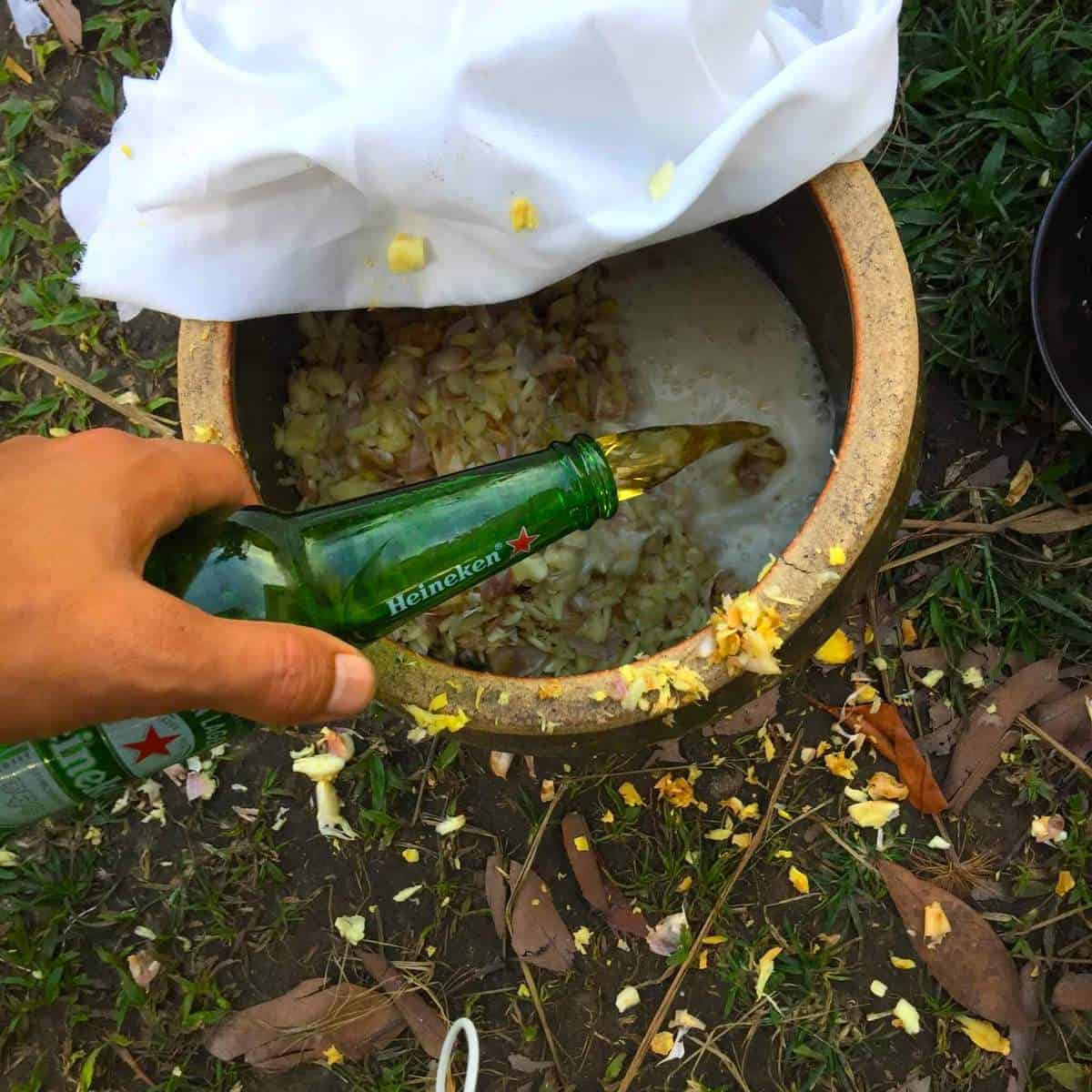
- After you do this, let it sit for a few days UNCOVERED.
Step 3. Add Sugar
- After the initial 3-day waiting period, fill up the ceramic up with water to make the whole contents amount filled up to 2/3.
- Mix well so that the sugar dissolves
- Cover with a breathable cloth or paper and tie it tight with a rubber band or string to prevent the fruit flies.
Step 4. Storage
- Keep it in an airtight container.
That’s it!
It should not smell sweet.
It should not smell sour.
It should smell nice, in a way. It will be strong, but it won’t smell soured and bad.
If you see white mold growing that’s fine. If you see black mold growing, throw it out. Something happened that ruined the batch.
How To Use Liquid Herb Hormone (LHH)
Dilute it with water times 500 to 1,000.
Mix it in a spray bottle and spritz your plants every week or a few times per month to keep them strong and help them fight off potential diseases and invader insects.
More bio liquid fertilizers you can make:
- Fermented Fruit Juice (FFJ)
- Fermented Liquid Animal Protein
- Fermented Liquid Lactic Acid
- Fermented Liquid Calcium (Water Soluble Calcium)
- Fermented Liquid Calcium Phosphate
- Fermented Liquid Potassium
- Fermented Liquid Magnesium
- Fermented Liquid Boron
- Liquid Natural Minerals (Bacterial Mineral Water or BMW)
- Liquid Compost From Human Waste
Update: Here’s our updated Fermented Plant Juice (FPJ) recipe.
In time I will have made each organic liquid fertilizer above and hope to make a recipe blog post here on SproutingFam (once perfected). Until then, we have plenty of good information online to learn from! Chris Trump and another couple called Natural Farming Hawaii both share how to make a lot of these.
Summary

Natural farming in Thailand is derived from various methods learned from surrounding countries and decades of experience.
Korean Natural Farming has a strong influence in natural farming in Thailand. Along with Korean farming methods are Japanese natural farming methods. KNF and all its organic liquid fertilizers are a part of permaculture and can be utilized in Thailand’s subtropical weather or in temperate climates throughout the United States. These can be utilized in any region around the world.
Growing plants with organic liquid fertilizers is an effective and fun way to farm.
Learning how to make them is also a nice skill to have. You can literally make these natural liquid fertilizers for free.
You can use scraps, plants around the house, or other herbs you grow in your garden to make this fermented bio liquid. The only things you really need outside of the plants, herbs or fruit are the sugar and water.
Here’s a good video on Youtube about how to make organic liquid fertilisers.
Thanks for coming by the Sprouting Fam blog.
Are you making KNF liquid fertilizers?
Next Post: 5 Hanging Basket Plants (Herbs, Succulents, Veggies, Flowers)



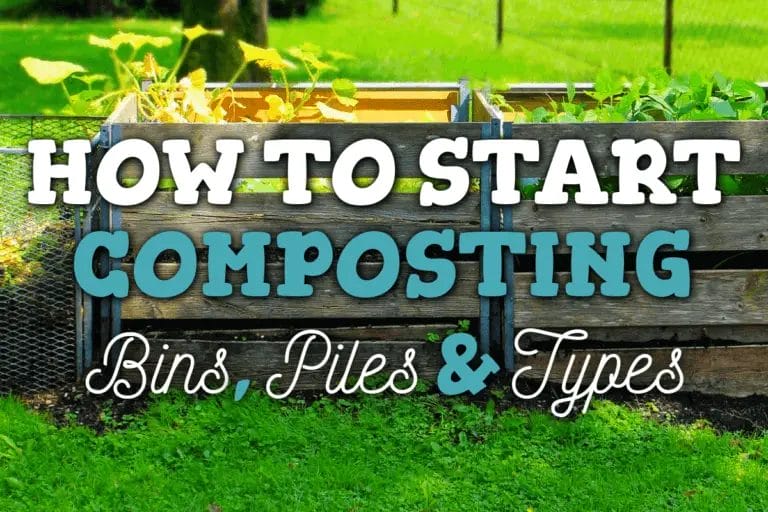
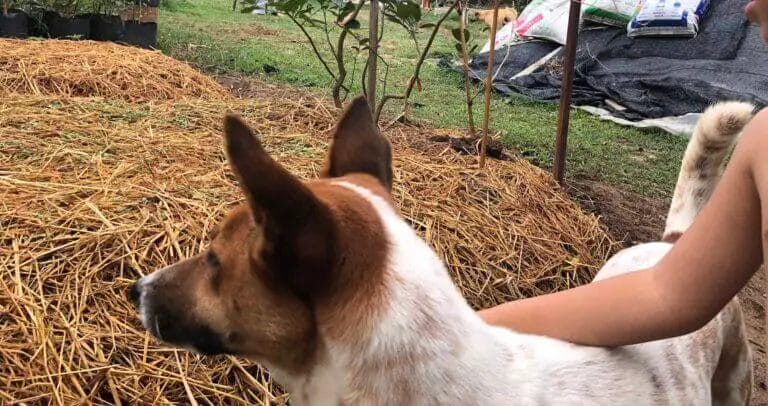
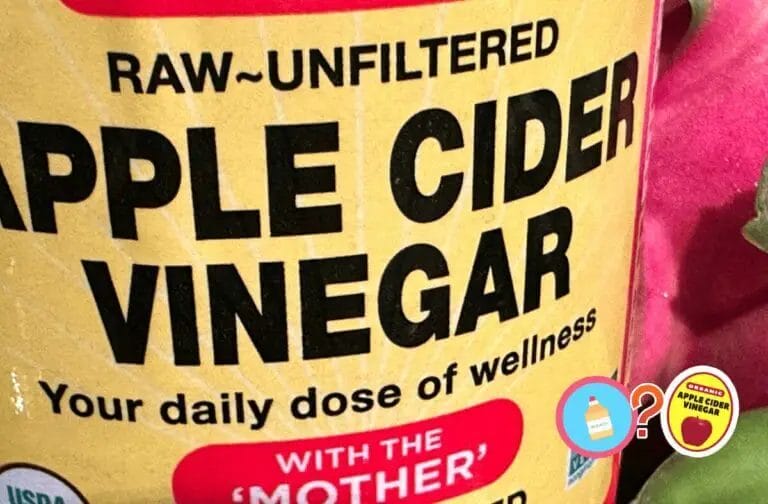
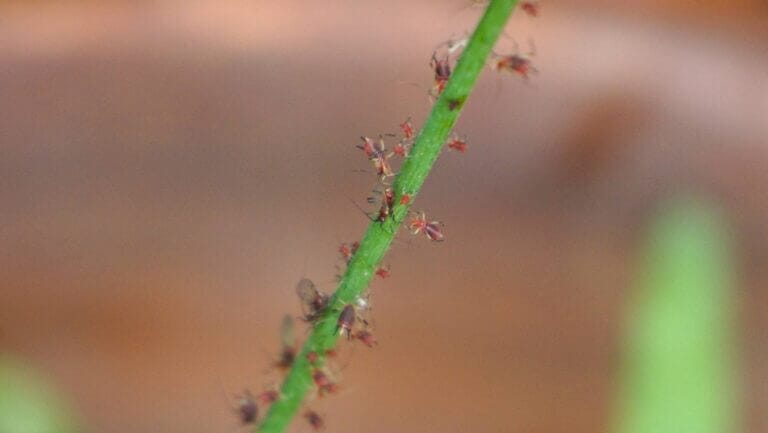
Thank you very much for you informations Similarly we are also supporting many farmers and even Agri University Research sciebtists to solve many serious problems in mulbery crop ,pomogranate crop,banana,paddy,sugarcane to get best yields at cost benefit ratio Kindly be in contact with us and let us share our experiences with each other in the interest of many regards Narayan Rao LS United Scientific solutions Bangalore India senior Agro consultant
That’s a great thing you’re doing. I will Google search you thanks for coming by and sharing that information.
my pleasure thankyou
Good morning Mr and Mrs John May God bless you lovely couple as well as your son RegardsNarayan Rao LS
Thank you very much!! God bless
Medicinal Herbs
In Medicinal herbs , the sugar you mention is Molasses ?
How much do we add ?
Thanks
Rohit
Hey Rohit, for the FPJ you mix the plants with sugar at a 3:1 ratio. And for the LHH Liquid Herb Hormone it’s the same. You add 1/3 of the amount of herbs you used in sugar. Molasses works good and so does brown sugar. We use brown sugar. When making a large batch, molasses would be more economical. Thanks for the questions!
Is the brown rice cooked or raw ?
Hi Rohit, the brown rice is raw and unwashed. Thanks for the comment!
I have noticed you don’t monetize sproutingfam.com,
don’t waste your traffic, you can earn extra bucks every month with new monetization method.
This is the best adsense alternative for any
type of website (they approve all websites), for more details simply
search in gooogle: murgrabia’s tools
Thanks I’ll check it out. Looks a little sketchy though… I’ve seen people adsense on blogs, and I may decide to use that one if anything!
Absolutely love the information given here! great job and thank you.
I just had one question, how long can these liquid fertilizers last? once the process is completed.
Hi, thanks for the comment and compliment! Just saw it. I’ve learned they can last all the way up to a year in a perfect storage environment. I prefer to use them before 6 to 8 months are up. But this is not based on anything. I haven’t tested it. But I do remember learning that they can last up to a year. Not the most helpful answer, but that’s how we handle it.
Amazing blog post!!
You have shared valuable information about “Organic Liquid Fertilizer “. Keep sharing this kind of information!!
Thanks Ben! Seasol looks like a great product and you guys seem like a great company. I have some clients from AU, mostly Perth area (I do SEO), so that’s cool to get a comment from an Aussie. Cheers.
Checked brown rice water, looking healthy, white sediment on top, Sunday I’ll be adding the milk and start a batch of LHH. Anyone heard of using native plants for the KNF liquid fertilisers ? I’ve been told that the Wandoo trees leave a type of acid in the ground which prevents plant growth. Perth Australia. I live for this type of lifestyle.. Love it
How awesome to be able to do natural farming in Perth! I work with a few small businesses there and know a lot about your Perth WA suburbs even though I’ve never been. Maybe one day. As far as native plants, using what you have locally for the fertilisers is the best way to do it. That’s interesting about the Wandoo trees. Cheers!!
Hi
Which fertiliser or fertiliser combo would you recommend for fruiting plants such as tomatoes please, its my first attempt, im rather excited!
thanks
Kim
GOOD DAY Sprouting Fam!
I like the site. I’m just finishing up my first year if natural natural gardening and then I stumbled on your site. Very Nice. I am really encouraged that others see the value in natural fertilizers. I was just ready that there is going to be a large scale fertilizer shortage on a world wide level due to many factors. For this moment in world history due to lack of employable individuals, due to Covid restrictions, and a shortage of some fuels. Specifically Natural Gas which is used in the production of Nitrogen. That being said, never has there been a better time to start making your own liquid fertilizer rather than buying something that is rising in cost along with the price of foods we have to buy at the store.
This first year has been a blast. My garden has never been so productive and I really feel more in touch with the whole process. I have been a Chef for 40 years and I have always grown my own herbs and vegetables. I got put ing a situation were I couldn’t just run down to the store and buy what I wanted to for gardening. I started saving all containers and all unused food to make a garden. What a blast! I am in a facility for a short time where all our food comes from from one kitchen and there isn’t much variety. Most people won’t even finish the food they are given. All that food goes strait into my recycled container box. I ferment it and save the juice off the fermenter and save it until I am sure the fermentation has finished. Very cool! What is left, I will mix with water at 1/100, it depends on what food the other residents her not eating.
I have have not tried making fermentation tea with specific vegetable matter but I have seen that I get a great deal more nitrogen from dried green leaves than table waste. I’ve also seen that unused fruit juices are a great was to give your fermentation take a boost anytime it starts to slow down to much. ATTENTION! Don’t let Sugar SUBSTITUTES get in your fermentor. They kill bacteria. Good luck! Eat a Banana and save your peel!
Thank you very much for this very knowledgeable guide for KNF and FPJ!
Is this statement accurate?
“Is brown sugar mandatory in organic liquid fertilizer recipes?
Brown sugar is best because it has NOT been carbonated such as white cane sugar.”
I was under the impression that mass produced sugar is normally all processed to white then some molasses is reintroduced to produce golden and brown sugars. I might be wrong… thanks for the info.
Hi Kenni, You’re right, yes. Thank you for highlighting this! I’ve updated this part. Thanks again. John